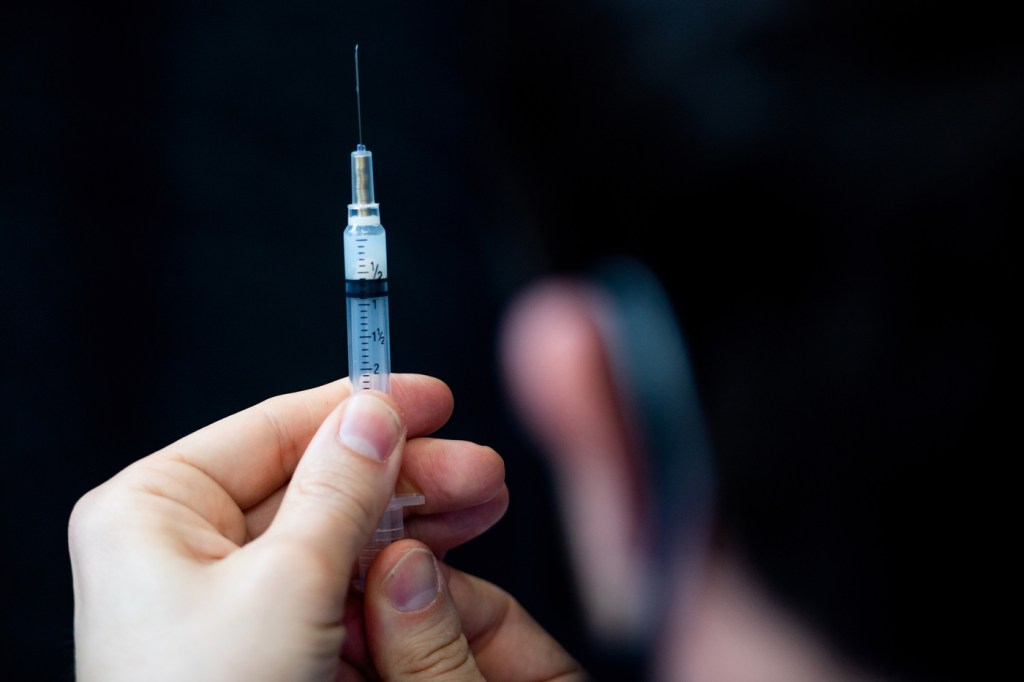Will people sign up for Moderna’s combo COVID-19-flu shot? Convenience may increase vaccinations, experts say

As of last month, more than twice as many adults in the U.S. had been vaccinated against the seasonal flu than had received the updated COVID-19 vaccine, even though COVID hospitalization rates were higher than those for influenza.
But with Moderna announcing the success of its combined mRNA COVID-19 and flu shot in a late stage trial, company executives said they hope to see an increase in the number of people adhering to vaccination recommendations.
“A combination vaccine that could provide dual protection in a single shot has the potential to encourage more widespread vaccination uptake while also reducing the burden of acute respiratory disease on health systems,” Francesca Ceddia, Moderna’s chief medical affairs officer, said in a June 10 blog post.
She said that uptake of the 2023/2024 flu vaccine was 48.4% and 22.4% for the updated COVID-19 vaccine for people over the age of 18. She pointed to CDC statistics that showed the only time in the past seven months hospitalizations for flu were higher than for COVID-19 was a couple of weeks in late December and early January.
The convenience of the two-for-one shot could drive up the percentage of people vaccinated against the coronavirus, says Mansoor Amiji, Northeastern University distinguished professor of pharmaceutical sciences and chemical engineering.
But he says it also has the potential of decreasing flu vaccinations among people who harbor politically tinged fear of the COVID-19 vaccine and the mRNA technology used to create it and the Moderna combination vaccine.
“The jury is out to some degree because on one hand there is an advantage because compliance-wise you only have to get one shot instead of two,” Amiji says.
That development can appeal to people who are afraid of needles as well as those pressed for time, he says.
“People could get one shot and be protected from both of these infections,” Amiji says.
But some people may say, “‘I don’t want to get a COVID vaccine, so I’m not going to get the flu shot either,’” he says.
The politically charged nature of beliefs about the COVID-19 vaccine, which is based on mRNA technology, means “you could deter people from getting either one of the two when you combine them together.”
And while Moderna reported that side effects of the combination vaccine were relatively mild, including injection site pain, fatigue, myalgia and headache, those who remember stories of people getting chills and fever after their COVID shot might shy away, Amiji says.
That would be a mistake, he says.
“From a safety perspective, the (mRNA) technology is better than anything we have seen in the past.”
Some companies are working on developing an mRNA vaccine solely against influenza, but pharmaceutical companies see a great deal of potential with two-in-one vaccines. Moderna competitors Pfizer and BioNTech are currently working on their own versions of the combination shot.
Featured Posts
On June 10, Moderna executives announced that a Phase 3 trial of the combination shots, known as mRNA 1083, showed that its efficacy was just as good as or better than single shots in a study of two groups of 4,000 people, one for ages 50 to 64 and the other 65 and up.
“Moderna is the only company with a positive Phase 3 flu and COVID combination vaccine,” company CEO Stephane Bancel said in a statement.
The company said the next steps are to present the Phase 3 clinical data at an upcoming medical conference and submit it for publication.
Until the data has been peer reviewed, Moderna’s statements have to be taken “with a grain of salt,” Amiji says.
Even with FDA approval, the two-in-one vaccine probably would not be available until fall 2025 at the earliest, Amiji says.
“But the good news is that it’s in Phase 3 and has been tested in 8,000 people,” he says.
“They are taking advantage of this unique attribute of the mRNA platform technology, which is that you can combine mRNA sequences into one package and deliver multiple copies of mRNA that will develop antigens and protect against multiple diseases,” Amiji says.
In the near future, he sees a three-in-one vaccine being developed that will potentially immunize people against flu, COVID-19 and RSV.











